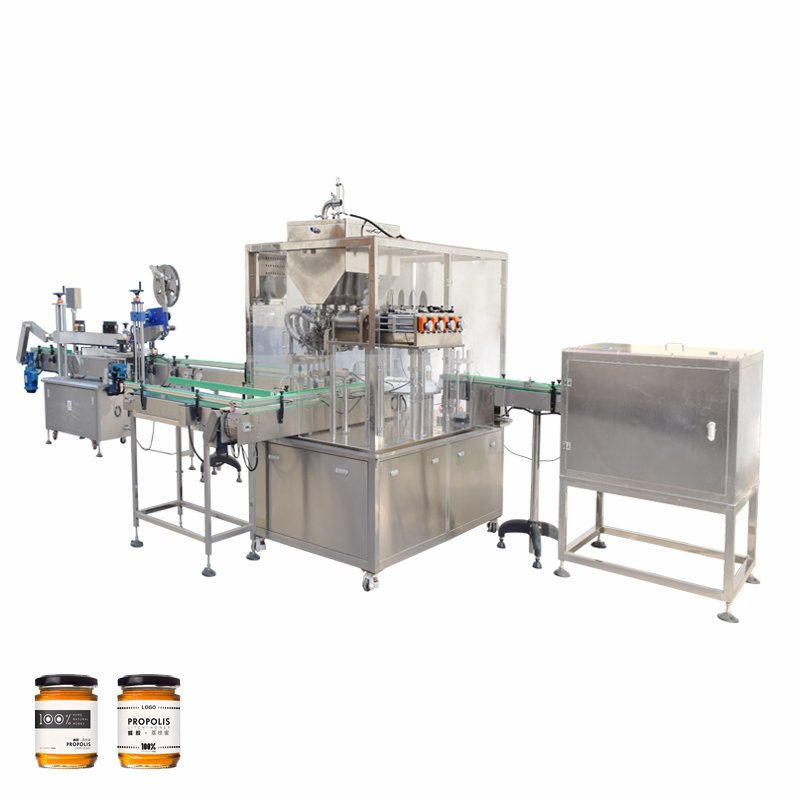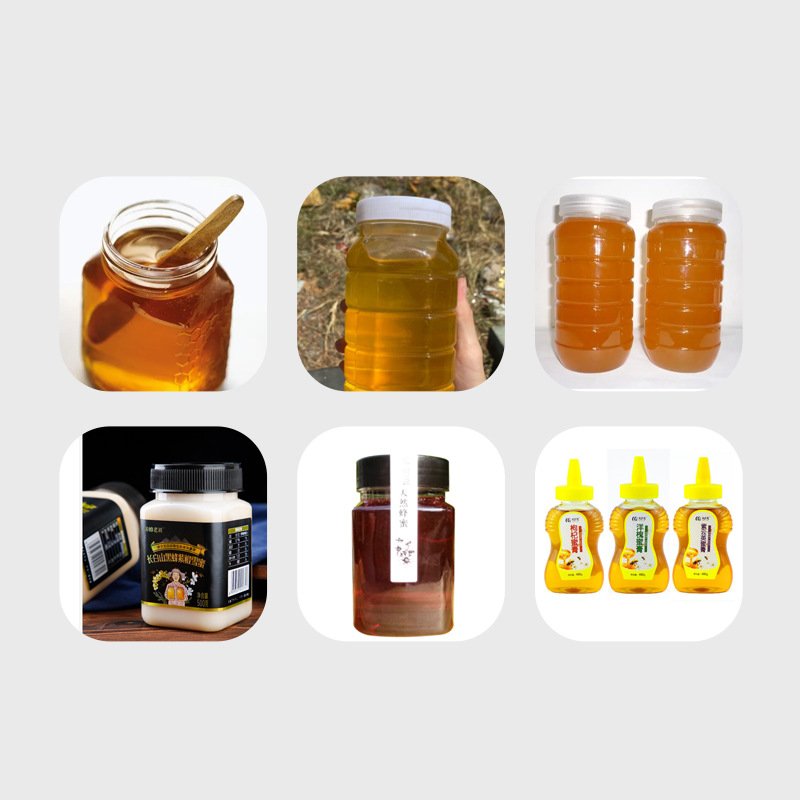In today’s rapidly evolving food production landscape, automation plays a crucial role in enhancing efficiency and consistency. Hummus filling machines have emerged as crucial assets in this sector, offering precise, high-speed, and hygienic packaging solutions tailored for viscous products. This guide delves into how these machines operate, the various types available, and expert tips to help you select the right equipment for seamless production and superior product quality. With the hummus market projected to expand significantly, understanding these machines is key to staying competitive and innovative.
What is a Hummus Filling Machine?
A hummus filling machine is specialized industrial equipment designed to deposit precise amounts of hummus into containers, such as jars, tubs, or pouches. The machine’s primary purpose is to automate and enhance the packaging stage of hummus production. This stage usually takes a lot of work and time. By using machines for this task, producers make sure the final product is more accurate, clean, and efficient when delivered to consumers.

The importance of hummus filling machines for the food industry, especially factories and producers, cannot be overstated. Hummus is a highly popular and fast-growing product segment globally, with demand rising for both artisanal and large-scale industrial versions. Filling containers accurately and consistently ensures high product quality and customer satisfaction. It also reduces waste and helps meet strict food safety rules. Moreover, as hummus has a thick, sometimes chunky texture, specialized handling is required to avoid damage to packaging and product degradation.
Automated filling technologies integrated in Hummus filling machines addresses critical issues in traditional manual processes. It significantly enhances production speed—machines can fill hundreds or thousands of containers per hour, compared to tens when done manually. Consistency is vastly improved because each container receives the exact portion size, reducing variability and product spills. Hygiene is also enhanced since the automated system minimizes human contact with the food, thereby reducing contamination risks and meeting regulatory standards, such as those set by the FDA and HACCP guidelines.
How Do Hummus Filling Machines Work?
Step-by-Step Workflow of a Hummus Filling Line
A typical hummus filling line combines several automated stages that work in sequence to prepare the product for shipment:
- Container Feeding: Empty containers move onto the conveyor belt using gravity feeders, vibratory trays, or robotic arms, depending on automation levels.
- Filling: The filling machine deposits precise volumes of hummus into containers via nozzles, using filling pumps adapted for thick, viscous substances.
- Capping: Once filled, containers are moved to capping stations where lids or seals are applied and tightened automatically.
- Labeling: Filled and capped containers advance to labeling machines that apply branding and product information labels accurately.
- Packaging: Lastly, containers are grouped and packed into cartons or crates for distribution.
This process ensures the production goals of filling volume accuracy, high-speed throughput, and strict hygiene control are met. By integrating these stages on a single line, manufacturers reduce manual labor and errors while maintaining a continuous flow.
Semi-Automatic vs Fully Automatic Machines
Although there are manual filling machines and automatic ones, due to the highly demanding industry, automatic hummus packaging machines are in high demand. They automate the process and come with a high level of accuracy, speed, and filling capacity. Here we have broken down the automatic Hummus filling machines into two types, let’s discuss them:
- Semi-Automatic Machines: Require an operator to manually load containers and sometimes trigger filling cycles. They are advantageous for small-scale or artisanal producers who need better precision than manual filling but do not require industrial-level speeds. Semi-automatic machines tend to be simpler, less costly, and easier to set up.
- Fully Automatic Machines: Run continuously without human intervention once set up. The automatic hummus filling machines include automatic container feeding, filling, and sealing machines, as well as capping and labeling, all in a single setup. Such machines are mainly industrial-scale hummus filling machines with large production lines, capable of filling, bottling & capping thousands of containers per hour with minimal downtime. Fully automatic systems demand higher investment but offer superior speed and consistency.
The choice between these depends largely on production scale, budget, and workforce availability.
Types of Hummus Filling Machines
Hummus filling machines come in many varieties tailored to different needs:
- Semi-Automatic and Fully Automatic: As outlined above, there are two types of filling and packaging machines. They are se
- Piston Fillers: In Piston-based filling machines, a piston moves within a cylinder to draw and dispense a fixed amount of hummus. These are ideal for thicker or chunkier products since they handle viscous materials without excessive air incorporation.
- Volumetric Fillers: Measure volume rather than weight as the filling metric, filling a chamber exactly before dispensing. These Volumetric filling machines are highly precise and used when strict portion control is required.
Additionally, machines follow structural designs such as:
- Linear Machines: Containers move in a straight line, making them easier to maintain and suitable for medium production speeds.
- Rotary Machines: Containers are placed on rotating platforms, allowing high-speed continuous filling in a compact footprint, ideal for very large operations.
Compared to manual filling systems, these automatic filling and packaging machines substantially reduce fatigue-related errors andAdditionally improve accuracy. additionally, these food packaging machines maintain uniform presentation of hummus products.
Hummus Filling Machine Construction and Components
A typical hummus filling machine consists of several key components, each designed for optimized performance and food safety:
- Filling Pump: This draws hummus from supply tanks and propels it to the filling nozzles. Pumps are usually piston or gear type, constructed with hygienic design principles.
- Nozzle: Filling heads/nozzles precisely direct hummus flow into containers, designed to minimize dripping and product waste while accommodating different container sizes, granule material, and filling volume range.
- Conveyor System: Moves containers smoothly through each filling stage, adjustable for speed and spacing.
- Capping System: Mechanically or pneumatically applies and secures lids or seals.
- Control Panel: Interfaces with operators for setting filling volumes, machine speeds, and diagnostics.

Producers choose materials that meet food safety and durability standards. They often use stainless steel for parts that touch food because it resists corrosion and is easy to clean. Food-grade plastics and silicone seals are used where appropriate.
Optional features often include:
- Inline Labeling: Automatically positions and applies labels during the workflow.
- Automated Capping: Reduces manual labor for lid application.
- Heating Systems: Maintain hummus at optimal viscosity to facilitate smoother filling when the product is thick or chilled.
Benefits of Using a Hummus Filling Machine

Implementing a hummus-filling machine offers numerous advantages:
- Improved Filling Accuracy and Consistency: Precise volume control in these automatic filling machines reduces product giveaway and ensures a uniform customer experience.
- Reduced Labor Costs and Human Error: Automation requires fewer operators, lowering salary costs and eliminating variability caused by fatigue or manual errors.
- Enhanced Hygiene and Food Safety Compliance: Limiting human contact minimizes contamination risks, helping factories meet stringent standards such as FDA, HACCP, and ISO 22000.
- Versatility: Machines can be configured for various container sizes (from small tubs to large jars) and can handle different hummus consistencies, including chunky, smooth, or spicy variants. These machines are used for filling liquid and viscous food, processed cheese, pasta sauce, and dairy products.
These factors collectively improve overall production efficiency, product quality, and shelf life.
What to Consider Before Buying a Hummus Filling Machine
Before selecting a machine, producers should carefully evaluate:
- Production Capacity and Batch Size: Understand daily output targets and peak demand to choose a machine that can handle the required throughput.
- Compatibility with Hummus Viscosity: Verify the machine’s ability to process the specific hummus texture without clogging or spillage.
- Budget and Return on Investment (ROI): Factor in capital costs against labor savings, waste reduction, and increased production speed.
- After-Sales Support and Maintenance Availability: Reliable technical support and ready access to spare parts prolong machine uptime.
- Compliance with Food Safety Standards: Machines should meet FDA, HACCP, or equivalent certifications to ensure product safety and regulatory adherence.
- Energy Efficiency and Operational Safety: Choose models designed to minimize power consumption and incorporate safety features to protect operators.
Proper consideration ensures that the filling machine will integrate smoothly with operations and provide long-term value.
Maintenance and Troubleshooting Tips
Maintaining a hummus filling machine is essential for consistent performance:
- Regular Cleaning and Sanitization: Daily cleaning of all food-contact parts prevents bacterial growth and cross-contamination. CIP (clean-in-place) systems can simplify cleaning.
- Pump and Nozzle Calibration: Periodic checks maintain dosage accuracy and prevent overfilling or underfilling.
- Common Issues: These include uneven filling due to incorrect pump pressure, leakage at the nozzle caused by worn seals, and product sticking inside the filling chamber, which can be prevented by proper maintenance and lubricants.
Addressing issues early and adhering to cleaning protocols maximizes uptime and product safety.
Conclusion
Hummus-filling machines are a big step forward for hummus makers. They use technology and food safety to improve production quality and efficiency. When manufacturers automate filling containers, capping, and labeling, they control volume accuracy better. They also increase production speed and keep hygiene standards high. Producers should select machines based on their specific production needs and the way they operate. They must also keep the machines well-maintained. This ensures that production runs smoothly, adheres to rules, and generates a profit. For hummus producers seeking to scale or modernize their operations, King Pack Filling Machines offers the best in-line filling machines for various applications. With years of experience and high-quality manufacturing standards, our machines stand out, coupled with outstanding customer support. So, contact us now and grow your business!




